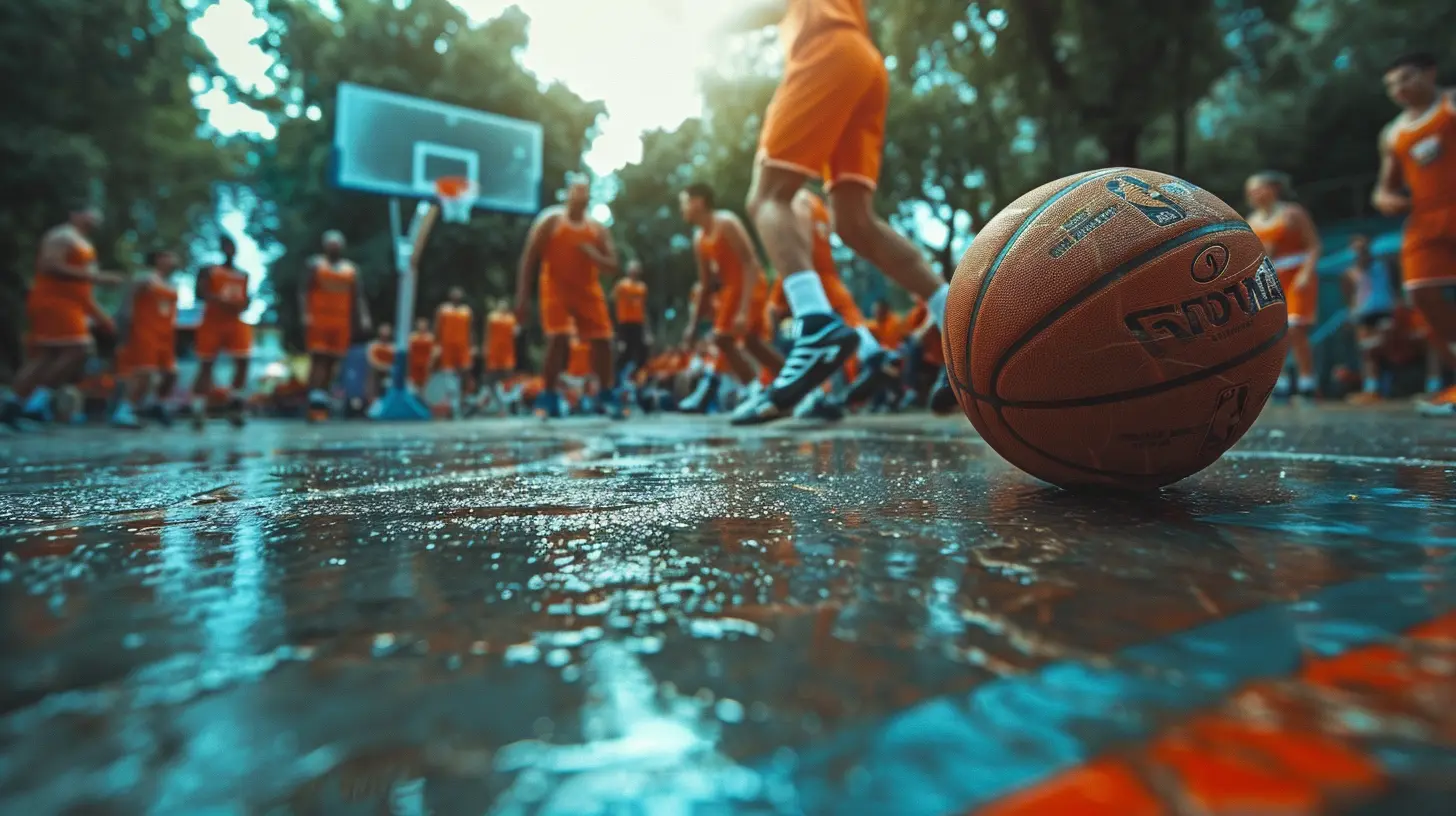Navigating the 2-3 Zone in Basketball
11 October 2025
Basketball might look like a simple game to the untrained eye—pass the ball, shoot the ball, run like your life depends on it. But underneath all that sweat and sneakers squeaking is a brainy chess match. One big piece of that puzzle? The 2-3 zone defense.
Yeah, I know. Just hearing "zone defense" probably makes you want to take a nap. But hang in there, because we’re diving into one of the most classic, sneaky, and downright stubborn defensive strategies in hoops history. The 2-3 zone. And trust me, once you understand it, you'll never look at a basketball game the same way again.

What Is the 2-3 Zone in Basketball?
Alright, let’s break it down. The 2-3 zone is a defensive scheme where players guard areas (zones) instead of individual opponents. Picture two players standing up top near the perimeter and three lined up like a wall near the paint. This forms a sort of protective umbrella that says, “You shall not pass… or shoot… at least not easily.”The idea? Shut down drives into the lane, clog the paint, and force your opponent to shoot from outside or make super-smart passes. It’s like building a fortress with just five soldiers — but if they move in sync, it works like magic.

Why Coaches Love the 2-3 Zone
Let’s be real — coaches adore the 2-3 zone. And not just because it’s old-school cool.Here’s why this defense gets serious play:
- It’s simple to teach: You don’t need a basketball Ph.D. to pick it up.
- It hides defensive weaknesses: Is your big guy slow-footed? Boom. Park him under the basket.
- It confuses offenses: Many teams struggle to figure out how to break the zone, especially young or less experienced squads.
- It saves energy: Less chasing, more containing. Perfect for short benches or tired legs.
It’s no wonder legendary coaches like Jim Boeheim at Syracuse built an empire on this thing.

The Setup: How the 2-3 Zone Works
Imagine your team like a tightly choreographed dance crew — everyone has a spot, and they’ve got to move in unison.The Top Two Guards
These are your frontmen. Quick, scrappy, and annoying as heck (in a good way). Their job is to pressure the ball as it crosses half-court, deny easy perimeter passes, and make life miserable for any guard who thinks about waltzing into the lane.The Bottom Three (Forwards & Center)
These dudes are the anchors. Think of them as the bash brothers from The Mighty Ducks, except with more rebounds. They cover the blocks and protect the rim like it’s the last slice of pizza. The center camps under the basket, while the forwards shift side to side to contest corner threes and help on drives.The Movement
Now, here’s where it gets spicy. Even though players are guarding zones, they’re constantly in motion — sliding, shifting, rotating like a human Rubik’s Cube. When the ball swings from one side to the other, so does the zone. It’s all about angles, anticipation, and crazy levels of communication.
Strengths of the 2-3 Zone
Let’s talk about the good stuff. When run correctly, the 2-3 zone can suffocate offenses like a cozy blanket no one asked for.1. Force Outsiders to Be Heroic
The zone is like that friend who locks the liquor cabinet at parties. You can still have fun, but you’ve got to work harder for it. In basketball terms — it forces teams to beat you from the perimeter. If they’re cold from three, good luck.2. Prevents Dribble Penetration
Say goodbye to guard blow-bys and easy layups. The zone puts bodies in the paint and says, “Not in my house.”3. Hides Individual Weaknesses
Got a slow-footed big man? A lazy wing? A point guard who couldn’t guard a chair? No worries. The 2-3 zone keeps them from being exposed one-on-one too often.4. Disrupts Offensive Rhythm
Teams thrive on rhythm, cuts, and fluid ball movement. The 2-3 zone pokes holes in that rhythm. Suddenly, beautiful pick-and-rolls become awkward passes and second-guessing.Weaknesses of the 2-3 Zone
Okay, we’ve praised it enough. Time for the roast.1. Vulnerable to Outside Shooting
If the opposing team is hot from beyond the arc, you’re toast. A zone that doesn’t contest threes is basically a welcome mat to a shootaround.2. Offensive Rebounding Woes
In a zone, it’s harder to box out because nobody has a clear man. This often leads to opponents gobbling up second chances like grandma’s cookies.3. Requires Perfect Communication
A single missed rotation can destroy your whole defense. It's like forgetting one ingredient in a cake recipe — suddenly, it's just sad bread.4. Tricky Against Skilled Big Men
A smart center who can pass from the high post? Nightmare fuel for a zone defense. He can pick it apart like a Rubik's Cube in the hands of a genius.
How Offenses Attack the 2-3 Zone
Let’s flip the script. If you’re playing against a 2-3 zone, you gotta be clever.High-Low Action
Smart coaches love putting a player at the free-throw line (the "high post") and one near the baseline ("low post"). This messes with the zone’s shape, like putting a puzzle piece in backward.Ball Reversals
Swing it side-to-side, fast. Make the zone move, rotate, sweat, and eventually crack. The more you stretch it, the more it leaks.Corner Threes
The 2-3 zone’s achilles heel. Those corner threes are often open if defenders don’t rotate quickly. Splash city, baby.Overloads
Stack more offensive players on one side of the court than there are defenders. Force confusion. Find gaps. Attack like a tactical ninja.Famous Users of the 2-3 Zone
This defense isn’t just for your local high school team. Big boys use it too.Syracuse University
Possibly the Sistine Chapel of 2-3 zones. Coach Boeheim ran this thing like Beethoven with a baton. Syracuse made deep tournament runs and beat teams with better talent — all thanks to that spooky orange wall.Miami Heat (Spurts of It)
Erik Spoelstra isn’t afraid to unleash a 2-3 zone when needed — especially to change momentum or fluster a ball-dominant scorer.High Schools & Rec Leagues
Why? It’s simple, effective, and lets you take a breath or two while still playing defense. Also, let’s be honest — not everyone has the legs to play man-to-man for 40 minutes.
Tips for Mastering the 2-3 Zone
So, maybe you're thinking about adding the 2-3 to your bag of tricks. Good call. Here’s how to make it work.Talk. Nonstop.
Communication is key. Call out screens. Yell “corner!” when someone sneaks behind. Over-communicate like you’re narrating a documentary.Fast Feet, Not Fast Hands
You don’t need to reach — you need to move. Slide, shift, stay in front. Defense is a dance, not a brawl.Fly to the Corners
Don’t be lazy. If that ball goes to the corner, someone needs to get there in a hurry before the splash.Rebound Like Your Life Depends On It
Zone rebounding is tough. Box out anyone in your area. Then go get the dang ball like it’s loose candy at Halloween.When to Use the 2-3 Zone
Now, this isn’t a one-size-fits-all deal. Timing is everything.- Facing a bad shooting team? Time to zone up.
- Your team fatigued or in foul trouble? Give it a go.
- Need a momentum shift after a run? Throw it out there and see what happens.
It’s a situational weapon. Like a superhero cloak you only wear when things get dicey.
Wrapping It All Up
Navigating the 2-3 zone in basketball isn't rocket science, but it’s definitely more than just standing in place and waving your hands. When executed well, it’s a nightmare for opposing offenses — a swirling vortex of arms, feet, and confusion.Whether you’re a coach looking for a new strategy, a player wanting to up your defensive IQ, or just a basketball nerd who loves X’s and O’s, understanding the 2-3 zone gives you a whole new appreciation for the game.
And hey, next time you watch a game and see a defense shift into a zone, don’t just groan and reach for the chips. Lean in. Watch the rotations. Spot the weaknesses. You, my friend, are now a 2-3 zone connoisseur.
all images in this post were generated using AI tools
Category:
TacticsAuthor:

Ruben McCloud
Discussion
rate this article
1 comments
Faenor Rhodes
Master the zone, unleash greatness!
October 24, 2025 at 10:47 AM

Ruben McCloud
Thank you! Mastering the zone truly unlocks a team's potential on the court.


